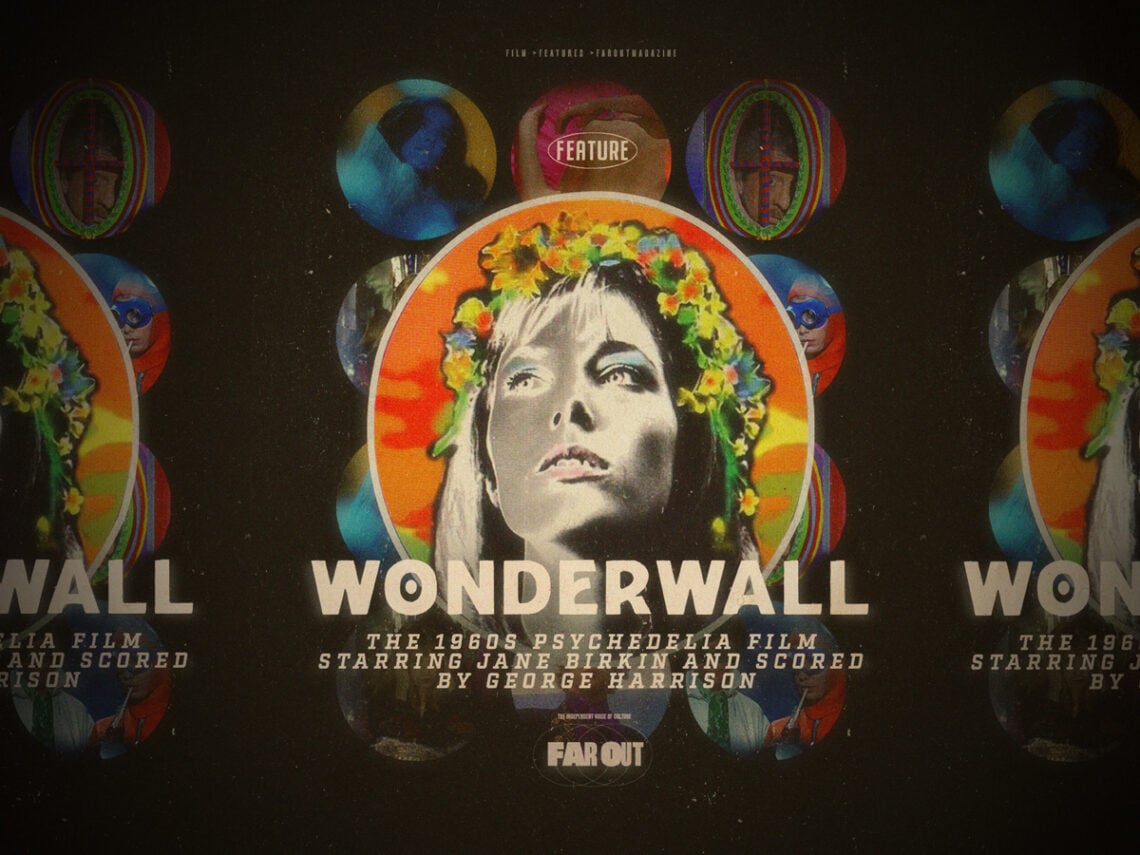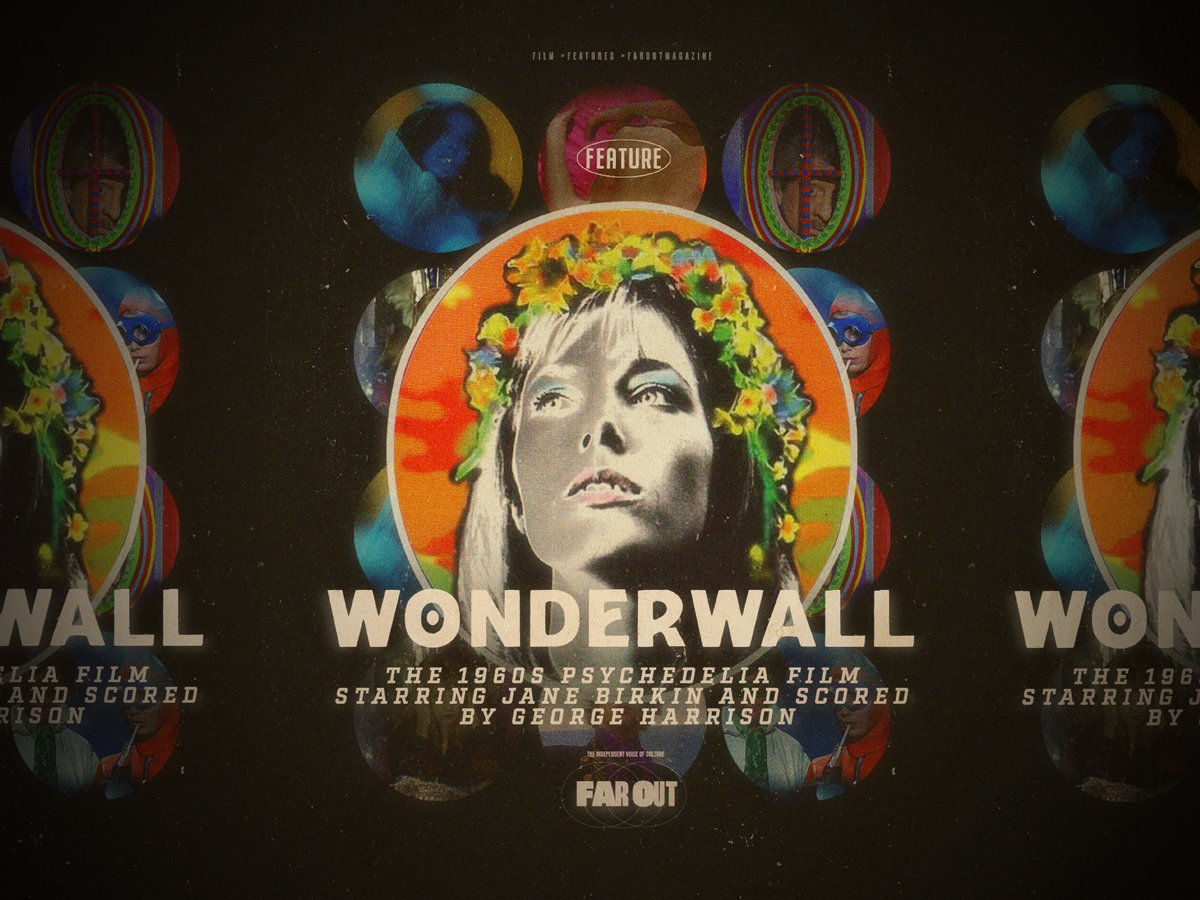
(Credits: Far Out / Compton-Cameo Films)
Thu 7 August 2025 11:00, UK
A drug-induced haze swept over many young people during the 1960s, a time when bands like Grateful Dead, The 13th Floor Elevators, The Electric Prunes, and, of course, The Beatles, were taking inspiration from psychedelia, which was increasingly dominating the cultural landscape.
Acid was taken by the new generation of post-war children who believed in the power of love and rock music, spending their days getting high as they had their minds blown by the sounds of instruments that hadn’t been commonly used in Western music before, like a sitar. Encouraging a state of blissful detachment from reality, it wasn’t long before the psychedelic films became popular, from Daisies and The Trip to 2001: A Space Odyssey and Yellow Submarine.
However, less well-remembered is a British psychedelic film that emerged in 1968 called Wonderwall. Despite the fact that it spawned the soundtrack album Wonderwall Music by George Harrison, which in turn inspired the Oasis track, and starred indelible icon Jane Birkin in the leading role, the movie isn’t exactly revered as a classic of British ‘60s cinema. That’s probably because it’s just not that good.
Still, it shouldn’t be disregarded that easily, because it encapsulated such an exciting moment for the psychedelic subcultural phenomenon that defined the era, as well as embodied a time of great cinematic experimentation that saw huge names open their minds to unconventional concepts. Harrison, a member of one of the biggest bands in the world, decided to make a soundtrack for the movie that was completely defined by his interest in Eastern culture and philosophy, using Indian instruments to create a predominantly instrumental album that revelled in sparse and often repetitive sounds.
Meanwhile, Birkin, who would soon rise to greater prominence as a musician and actor, gave one of her first proper performances in Wonderwall following a few bit parts in movies like Blow-Up and Kaleidoscope. As a notable model of the swinging sixties, Birkin appeared as Penny Lane—named after the Beatles song, no less—further uniting the many facets of this new cultural landscape in Britain.
Here was a film that truly encapsulated the changes shaping Britain into one of the most innovative and exciting areas for artistic experimentation. Sadly, Wonderwall took experimentation into territory that didn’t exactly work, and the result is a slight mess of mind-bending visuals with a rather flimsy plot. Jack MacGowran starred as an odd scientist who becomes obsessed with Penny Lane, peeping through a hole in the wall at her. Whether the movie makes much sense is a whole different question, but Birkin is as captivating as ever.
Regardless, it’s a fascinating time capsule of a period when acid-taking was the height of artistic cool, and the weirder and more surreal the visuals, the better. Wonderwall might not be an enduring masterpiece by any means, but it certainly helped boost Birkin’s career, which would soon take her to France, while Harrison became the first Beatle to make a solo album with the soundtrack, and a very good one at that.
Related Topics
The Far Out Beatles Newsletter
All the latest stories about The Beatles from the independent voice of culture.
Straight to your inbox.

